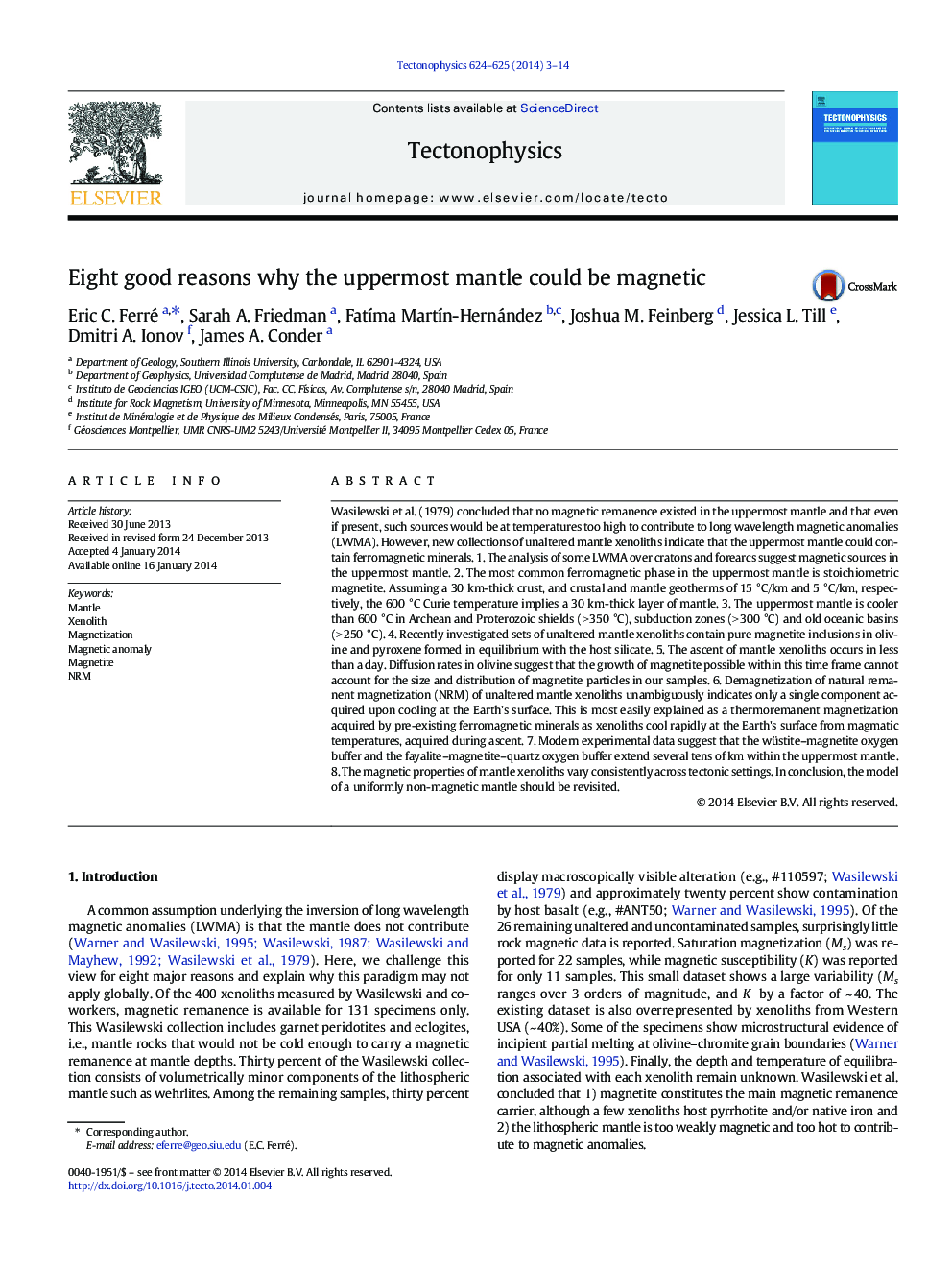| کد مقاله | کد نشریه | سال انتشار | مقاله انگلیسی | نسخه تمام متن |
|---|---|---|---|---|
| 4691997 | 1636766 | 2014 | 12 صفحه PDF | دانلود رایگان |
• The view of a universally non-magnetic mantle is challenged by new xenolith data.
• New evidence suggests that the upper mantle may contribute to magnetic anomalies.
• The mantle magnetic contribution varies with tectonic settings.
• The Swarm satellite mission will provide high resolution data to test our model.
Wasilewski et al. (1979) concluded that no magnetic remanence existed in the uppermost mantle and that even if present, such sources would be at temperatures too high to contribute to long wavelength magnetic anomalies (LWMA). However, new collections of unaltered mantle xenoliths indicate that the uppermost mantle could contain ferromagnetic minerals. 1. The analysis of some LWMA over cratons and forearcs suggest magnetic sources in the uppermost mantle. 2. The most common ferromagnetic phase in the uppermost mantle is stoichiometric magnetite. Assuming a 30 km-thick crust, and crustal and mantle geotherms of 15 °C/km and 5 °C/km, respectively, the 600 °C Curie temperature implies a 30 km-thick layer of mantle. 3. The uppermost mantle is cooler than 600 °C in Archean and Proterozoic shields (> 350 °C), subduction zones (> 300 °C) and old oceanic basins (> 250 °C). 4. Recently investigated sets of unaltered mantle xenoliths contain pure magnetite inclusions in olivine and pyroxene formed in equilibrium with the host silicate. 5. The ascent of mantle xenoliths occurs in less than a day. Diffusion rates in olivine suggest that the growth of magnetite possible within this time frame cannot account for the size and distribution of magnetite particles in our samples. 6. Demagnetization of natural remanent magnetization (NRM) of unaltered mantle xenoliths unambiguously indicates only a single component acquired upon cooling at the Earth's surface. This is most easily explained as a thermoremanent magnetization acquired by pre-existing ferromagnetic minerals as xenoliths cool rapidly at the Earth's surface from magmatic temperatures, acquired during ascent. 7. Modern experimental data suggest that the wüstite–magnetite oxygen buffer and the fayalite–magnetite–quartz oxygen buffer extend several tens of km within the uppermost mantle. 8. The magnetic properties of mantle xenoliths vary consistently across tectonic settings. In conclusion, the model of a uniformly non-magnetic mantle should be revisited.
Journal: Tectonophysics - Volumes 624–625, 11 June 2014, Pages 3–14
